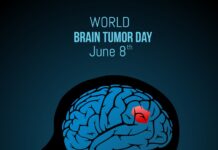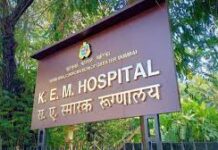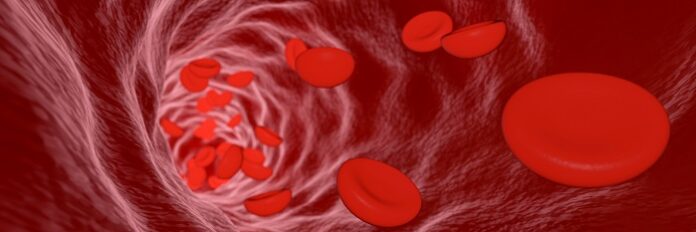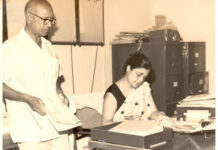It is crucial for general practitioners (GPs) to have comprehensive knowledge of the timely identification of acute stroke symptoms and the significance of immediate referral for potential thrombolysis. Intravenous tissue plasminogen activator is the preferred treatment for acute ischemic stroke. However, various limitations exist in our healthcare system, such as delayed hospital arrival stemming, among others, from inadequate awareness; limited accessibility to hospitals providing thrombolysis; financial constraints; and insufficient understanding of thrombolytic therapy among patients and referring physicians.
The Indian Practitioner recently conducted an email interview with doctors Raviteja Kakarla, Vipul Gupta, Rajsrinivas Parthasarathy, Bhupesh Kumar M, and Karan Sharma from the Department of Stroke & Neurointervention of Artemis Hospital, Gurugram. The interview focused on management modalities for acute stroke.
Q. The Indian Practitioner (TIP): What is the burden of stroke in the world and in India?
Artemis Doctors (AD): Stroke is a global public health problem and a major disease that brings a heavy burden worldwide. It is the second most common cause of death worldwide after ischemic heart disease.[1]Over 12.2 million new strokes occur each year. One stroke occurs every 3 seconds. Globally, one in four people over age 25 will have a stroke in their lifetime.[2] Six and a half million people die from stroke annually. Stroke is the third most common cause of disability. Over 143 million years of healthy life are lost each year due to stroke-related death and disability. In India stroke is the fourth leading cause of death and the fifth leading cause of disability. A recent systematic review showed that the stroke burden is quite high in India.[3] In India, one stroke occurs every 40 seconds and one person dies of a stroke every 4 minutes.
Q.TIP: What are the epidemiological trends in the young?
AD: Specifically, among younger patients, the epidemiolocal trends are highly concerning. Between 1990 and 2013, there was an increase in the prevalence of cases, deaths, and Disability Adjusted Life Years(DALYs) among younger adults.[4] A recent study done in India showed increased incidence among younger individuals compared to their Western counterparts. The risk factors for stroke identified included hypertension as the most common risk factor followed by diabetes, dyslipidemia, and drug addiction.[5] Creating Health awareness through education about lifestyle modifications, diet regulations, and daily exercise is key to preventing strokes in the young.
Q. TIP: What is the modern treatment for acute ischemic stroke?
AD: Revascularization therapy helps in re-establishing blood flow in the previously occluded vascular territory thereby preventing the ischemic tissue risk to become infarcted. Currently, two approved therapies are available to reperfuse the ischemic region – Intravenous thrombolysiswith tPA (Tissue type plasminogen activator) i.e., IV tPA and Endovascular thrombectomy (EVT).
Q. TIP: What are the indications for IV tPA in acute ischemic stroke?
AD: IV fibrinolytic therapy withrecombinant tissue plasminogen activators (rtPA) is now widely accepted. It was first Food and Drug Administration (FDA)-approved in 1996. Intravenous rtPA is recommended in patients with age more than 18 years who are presenting within 4.5 hours of ischemic stroke symptom onset with disabling neurological deficit and have acute ischemic changes (other than frank hypodensity) on Computerised Tomography (CT) with mild to moderate extent.[6] It is administered at a dose of 0.9mg/kg (maximum dose of 90mg) with 10% of the dose given as an IV bolus and rest given as an infusion over 1 hour with blood pressure maintaining at less than 180/105 mm of Hg. It is also indicated in minor strokes with disabling symptoms. IV alteplase is also recommended for patients taking antiplatelet drug combination therapy, end-stage renal disease on haemodialysis, and normalactivated partial thromboplastin time(aPTT).[6] According to SITS ISTR Registry, 58% of patients achieved functional independence at 3 months 1.6% % of symptomaticintracerebral haemorrhage risk within the 3-hour cohort, and 2.2% of symptomatic Intracerebral Hemorrhage (sICH) risk within a 3-4.5-hour cohort.[7]
Q. TIP: What are the contraindications for IV tPA in acute ischemic stroke?
AD: The absolute contraindication is the presence of bleeding anywhere. IV tPA is contraindicated in mild non-disabling strokes (NIHSS 0-5),extensive regions of clear hypoattenuation on CT scan of brain,Intracerebral hemorrhage(ICH), Sub Arachnoid Haemorrhage (SAH), history of ICH, acute head trauma, prior ischemic stroke/head trauma/intracranial or intraspinal surgery within 3 months, GI bleed within 21 days or GI malignancy, coagulopathy ( platelets <100 000/mm3, INR >1.7, aPTT>40 s, or PT >15 s ), patients who have received a full treatment dose of LMWH within the previous 24h, prior use of Newer Oral anticoagulants (NOACs) less than 48 hours, infective endocarditis, aortic arch dissection, intra axial intracranial neoplasm.[6]
Q. TIP: Is there any role of IV thrombolysis in the late window?
AD: Alteplase is also considered in patients with ischemic stroke who present within an extended window period of 4.5-9 hours of known onset time if there is CT or Magnetic Resonance Imaging (MRI) Core/perfusion mismatch with the help of perfusion imaging. Recent trials demonstrated that Alteplase can be beneficial in those patients who have a Diffusion Weighted-Magnetic Resonance Imaging(DW-MRI) lesion smaller than one-third of the Middle cerebral artery (MCA) territory and no visible signal change on Fluid attenuated inversion recovery Magnetic Resonance Imaging(FLAIR MRI) in patients with unknown symptom onset or beyond 4.5 hours.[6]
Q. TIP: What is the alternative to alteplase in acute stroke?
AD: Tenecteplase (TNK) is a genetically engineered mutant tissue plasminogen activator which a longer half-life, greater fibrin specificity, and tolerance to plasminogen activator inhibitor-1 than alteplase and allows for bolus injection, unlike alteplase. Current American Heart Association/American Stroke Association guidelines recommend TNK (single IV bolus of 0.25 mg/kg, maximum dose 25 mg) over alteplase only in patients who are also eligible to undergo mechanical thrombectomy as a bridging therapy.[6] However Indian Stroke guidelines recommend Tenecteplase 0.25mg/kg in patients with ischemic stroke only within 3 hours of symptom onset.[8]
Q.TIP: When should EVT be performed in patients with acute ischemic stroke?
AD: Since the efficacy of recanalization with IV tPA in Emergent Large Vessel Occlusion is less and the resultant deficit without recanalization is severely disabling and life-threatening, the need for endovascular mechanical clot retrieval was considered and data showed significant improvement in functional outcomes, disability, and death. With EVT there is 80-90% of revascularisation of proximal occlusions. The DAWN trial showed that the Number Needed to Treat is 2 for a better score for disability at 90 days and 2.8 for functional independence which is the most effective therapeutic intervention.[9]
Patients should receive mechanical thrombectomy if there is a causative occlusion of the internal carotid artery or MCA segment 1 (M1), National Institute of Health Stroke Scale(NIHSS) score is more than 6, ASPECTS of more than 6,symptom onset is within 6 hours and if there is no evidence of extensive Infarct core (volume is less than 70ml). [10]
However, achieving reperfusion is not time-dependent and is not confined to a rigid time window. There has been a paradigm shift from Time is a brain to Imaging is a Brain.[11] Patients can be considered for EVT till 24 hours from symptom onset if there is a clinical core mismatch or a perfusion/diffusion mismatch on advanced vascular and perfusion imaging. This is evidenced by low infarct core volume (<70ml) and a salvageable ischemic penumbra as demonstrated by absolute mismatch volume >10ml and mismatch ratio of >1.2 on CT/MR perfusion studies.[9,12]
Q. TIP: Why should we identify patients with acute stroke at the earliest?
AD: The phrase “time is brain” emphasizes the rapidity of neuronal loss as the stroke progresses which necessitates emergency evaluation and management. 120 million neurons, 830 billion synapses, and 714 km (447 miles) of myelinated fibers are lost each hour in a typical large vessel acute ischemic stroke. 1.9 million neurons, 14 billion synapses, and 12 km (7.5 miles) of myelinated fibers are destroyed each minute. The ischemic brain ages 3.6 years each hour without treatment.[13] Hence early prehospital stroke recognition helps in the rapid identification of stroke and administration of tPA and possible EVT. Stroke recognition scales used in the prehospital setting improve the recognition and diagnosis of stroke. Face Arm Speech Time(FAST) was found to be the most sensitive for stroke recognition. According to Indian stroke guidelines, any sudden onset disturbance in dekhna, dikhana, hath, pair, bol, or chal should raise suspicion of a Cerebrovascular event and indicate prompt medical consultation.[8]
10) TIP: What imaging should be performed during the emergency management of a stroke?
AD: All patients with suspected acute stroke must undergo imaging of the brain as quickly as possible after hospital arrival before initiating any specific therapy to treat Acute stroke.NoncontrastCompuetrisedTomography (NCCT) or Magnetic Resonance Imaging (MRI) are effective to exclude ICH and they identify early ischemic changes before IV alteplase administration for ischemic stroke. NCCT Brain is easy to perform whereas MRI is time-consuming. Vascular Imaging (both intracranial and extracranial) with either CTAngiography (CTA) or MRAngiography (MRA) is necessary for patients with acute stroke to rule out large vessel occlusion (LVO). It is reasonable to perform a combination of NCCT brain with CTA of head and neck along with DW MRI brain in all patients with acute ischemic stroke. However current evidence suggests a minimalistic approach to imaging wherein one can do NCCT with CTA to decide on further management
Q. TIP: What are the recent advances in EVT in patients with large ischemic cores?
AD: Three recently published trials favored thrombectomy over medical therapy in patients with Alberta stroke program early CT score (ASPECTS) 3-5 and who had an infarct core volume of 50ml or greater. The three trials showed that the mortality was similar between the trial groups but there was a shift from worst to better outcomes in all patients who underwent mechanical thrombectomy. Hence EVT may be offered to patients with large strokes within 24 hours with anticipation of good outcomes over time. [14–16]
Recent Updates in the Management of Intracerebral Hemorrhage (ICH)
Q. TIP: What is the role of Blood pressure management in ICH?
AD: A target of 130-150mm of Hg must be maintained in patients with ICH with mild to moderate severity for improving functional outcomes. However, in patients with large or severe ICH or those requiringsurgical decompression, the safety, and efficacy of intensive BP lowering is not clear. Evidence suggests that it is harmful to maintain a BP of less than 130 mm of Hg. And also,Blood pressure (BP) control must be smooth and sustained to avoid peaks and large fluctuations. Hence careful titration is necessary which can be beneficial for improving functional outcomes. The treatment of lowering Blood pressure must be initiated within 2 hours of ICH onset and the target must be reached within one hour to reduce the risk of Hematoma Expansion and improve functional outcome.[17]
Q. TIP: What is the role of thromboprophylaxis in ICH?
AD: Intermittent pneumatic compression (IPC) must be started on the day of diagnosis for Venous thromboembolism VTE (Deep Venous Thrombosis (DVT) and pulmonary embolism [PE]) prophylaxis in nonambulatory patients with ICH. The use of low-dose UFH or LMWH prophylaxis at 24 to 48 hours from ICH onset may be beneficial for preventing thrombosis relative to the risk of Hematoma Expansion (HE). Graduated compression stockings of knee-high or thigh-high length alone are not beneficial for VTE prophylaxis.[17]
Q. TIP: What is the role of surgical interventions in ICH?
AD: For patients with supratentorial ICH of >20- to 30-mL volume with moderate range Glasgow Coma Scale(GCS) scores of 5–12, minimally invasive hematoma evacuation with endoscopic or stereotactic aspiration with or without thrombolytic use can be useful to reduce mortality compared with medical management alone. However, its effectiveness in terms of improving functional outcomes is not yet clear.[17]
Take-home Messages
- IV Tpa is indicated in all patients with acute ischemic stroke presenting within 4.5hrs and also in those between 4.5-9hrs who have a Diffusion Weighted-Fluid attenuated inversion recovery -DWI FLAIR MRI mismatch
- Shift from Time is brain to Imaging is brain: Intra-arterial thrombectomy is indicated in all patients with acute ischemic stroke with evidence of large vessel occlusion within 24 hours who have a core perfusion mismatch or clinical core mismatch on Imaging.
- All patients with acute ischemic stroke presenting within 24 hours should undergo vascular imaging with either CTA or MRA to rule out LVO and must be referred to thrombectomy-capable stroke centersif there is evidence of LVO
- Adequate BP control in ICH patients will improve functional outcomes
- Minimally invasive hematoma evacuation is useful in supratentorial ICH with a moderate range of GCS (5-12)
Note: The views expressed in this interview are the experts’ own and are not endorsed directly or indirectly by The Indian Practitioner
References
- Feigin VL, Stark BA, Johnson CO, Roth GA, Bisignano C, Abady GG, et al. Global, regional, and national burden of stroke and its risk factors, 1990–2019: a systematic analysis for the Global Burden of Disease Study 2019. Lancet Neurol 2021 Oct;20(10):795-820; doi: 10.1016/S1474-4422(21)00252-0
- World Stroke Organization (WSO): Global Stroke Fact Sheet 2022 [Internet].
- Khurana S, Gourie-Devi M, Sharma S, Kushwaha S. Burden of Stroke in India during 1960 to 2018: A Systematic Review and Meta-Analysis of Community Based Surveys; Neurol India; 2021 May-Jun;69(3):547-559; doi: 10.4103/0028-3886.317240
- Krishnamurthi R V., Moran AE, Feigin VL, Barker-Collo S, Norrving B, Mensah GA, et al. Stroke Prevalence, Mortality and Disability-Adjusted Life Years in Adults Aged 20-64 Years in 1990-2013: Data from the Global Burden of Disease 2013 Study. Neuroepidemiology; 2015;45(3):190-202; doi: 10.1159/000441098.
- Singla M, Singh G, Kaur P, Pandian JD. Epidemiology of young stroke in the ludhiana population-based stroke registry. Ann Indian Acad Neurol. 2022 Jan 1;25(1):114–9; doi: 10.4103/aian.aian_711_21
- Powers WJ, Rabinstein AA, Ackerson T, Adeoye OM, Bambakidis NC, Becker K, et al. Guidelines for the early management of patients with acute ischemic stroke: 2019 update to the 2018 guidelines for the early management of acute ischemic stroke a guideline for healthcare professionals from the American Heart Association/American Stroke A. Vol. 50, Stroke. 2019. 344–418; doi: 10.1161/STR.0000000000000211
- Wahlgren N, Ahmed N, Dávalos A, Hacke W, Millán M, Muir K, et al. Articles Thrombolysis with alteplase 3-4•5 h after acute ischaemic stroke (SITS-ISTR): an observational study; Lancet 2008 Oct 11;372(9646):1303-9; doi: 10.1016/S0140-6736(08)61339-2.
- Guidelines for Prevention and Management of Stroke.pdf
- Nogueira RG, Jadhav AP, Haussen DC, Bonafe A, Budzik RF, Bhuva P, et al. Thrombectomy 6 to 24 Hours after Stroke with a Mismatch between Deficit and Infarct. New England Journal of Medicine. 2018 Jan 4;378(1):11–21; doi: 10.1056/NEJMoa1706442.
- Turc G, Bhogal P, Fischer U, Khatri P, Lobotesis K, Mazighi M, et al. European Stroke Organisation (ESO) – European Society for Minimally Invasive Neurological Therapy (ESMINT) Guidelines on Mechanical Thrombectomy in Acute Ischemic Stroke. J NeurointervSurg 2023 Aug;15(8): e8; doi: 10.1136/neurintsurg-2018-014569.
- Puig J, Shankar J, Liebeskind D, Terceño M, Nael K, Demchuk AM, et al. From “Time is Brain” to “Imaging is Brain”: A Paradigm Shift in the Management of Acute Ischemic Stroke. Vol. 30, Journal of Neuroimaging. Blackwell Publishing Inc.; 2020. p. 562–71.
- Albers GW, Marks MP, Kemp S, Christensen S, Tsai JP, Ortega-Gutierrez S, et al. Thrombectomy for Stroke at 6 to 16 Hours with Selection by Perfusion Imaging. New England Journal of Medicine. 2018 Feb 22;378(8):708–18;doi: 10.1056/NEJMoa1713973.
- Saver JL. Time is brain – Quantified. Vol. 37, Stroke. 2006 Jan;37(1):263-6; doi: 10.1161/01.STR.0000196957.55928.
- Sarraj A, Hassan AE, Abraham MG, Ortega-Gutierrez S, Kasner SE, Hussain MS, et al. Trial of Endovascular Thrombectomy for Large Ischemic Strokes. N Engl J Med 2023 Apr 6;388(14):1259-1271.; doi: 10.1056/NEJMoa2214403
- Yoshimura S, Sakai N, Yamagami H, Uchida K, Beppu M, Toyoda K, et al. Endovascular Therapy for Acute Stroke with a Large Ischemic Region. New England Journal of Medicine. 2022 Apr 7;386(14):1303–13.
- Huo X, Ma G, Tong X, Zhang X, Pan Y, Nguyen TN, et al. Trial of Endovascular Therapy for AcuteIschemic Stroke with Large Infarct. New England Journal of Medicine. 2023 Apr 6;388(14):1272-1283.
- Greenberg SM, Ziai WC, Cordonnier C, Dowlatshahi D, Francis B, Goldstein JN, et al. 2022 Guideline for the Management of Patients With Spontaneous Intracerebral Hemorrhage: A Guideline From the American Heart Association/American Stroke Association. Stroke 2022 Jul;53(7):e282-e361; doi: 10.1161/STR.0000000000000407.

























